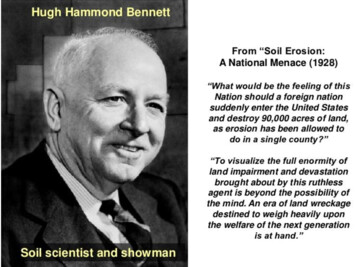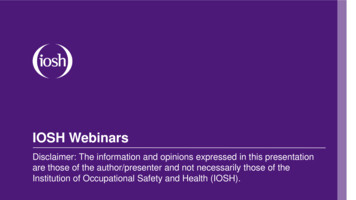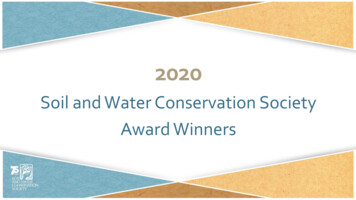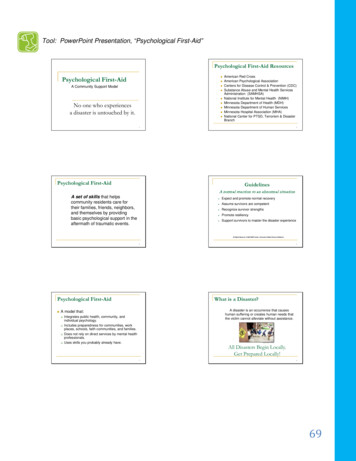
Transcription
Soil Conservation Act of1935Signed into law by President FranklinRooseveltThe law was designed “To provide forthe protection of land resourcesagainst soil erosion, and for otherpurposes”Created the Soil Conservation Service(NRCS since 1994)
In 1936, the nation further refined its soil and agricultural policywith the Soil Conservation and Domestic Allotment Act, whichamended the Soil Conservation Act in order to enhance federalstate coordination, discourage the over-use of land, assist tenantsand sharecroppers, and help create stable and adequate prices forfarm goods [8]. Roosevelt signed the law on February 29, 1936,and the next day stated: “The United States, as evidenced by theprogressive public opinion and vigorous demand which resulted inthe enactment of this law, is now emerging from its youthful stageof heedless exploitation and is beginning to realize the supremeimportance of treating the soil well” [9].
Compared to 2005, consumer demandin 2050 is estimated to drive farmers toproduce: 80 percent more meat52 percent more grain40 percent more roots and tubersFrom the Danforth Center for Plant Science
The International Food Policy ResearchInstitute Says (in a 2014 report) No-till farming alone could increase maize yieldsby 20 percent, but also irrigating the same no-tillfields could increase maize yields by 67 percent in2050. Nitrogen-use efficiency could increase rice cropyields by 22 percent, but irrigation increased theyields by another 21 percent. Heat-tolerant varieties of wheat could increasecrop yields from a 17 percent increase to a 23percent increase with irrigation.
The Indiana Conservation Partnership iscomprised of eight Indiana agencies andorganizations who share a common goal ofpromoting conservation. To that end, themission of the Indiana ConservationPartnership is to provide technical, financialand educational assistance needed toimplement economically and environmentallycompatible land and water stewardshipdecisions, practices and technologies.
CONSERVATION CROPPING SYSTEMSINITIATIVE-CCSI Established mentoring programOver 250 field days/workshops/events reaching over 15,000 peopleOver 250 producers have been assisted with one-on-one support16 mentors evaluated and trained; worked with 30 producers infirst year5 workshops for agency staff reaching over 190 employees8 private providers attending high level trainings; 52 industry stafffrom one eventPromoting top farmers via website, videos, etc.Assisting with INfield Advantage programIn 2012, Indiana led the nation on acres of cover crops planted.The Natural Resources Conservation Service estimates that close to1 million acres of Indiana’s 12 million acres of cropland had one ormore cover crops on them.
18.11.2020 · Soil Conservation Act of 1935 Signed into law by President Franklin Roosevelt The law was designed “To provide for the protection of land resources against soil erosion, and for other purposes” Created the Soil Conservation Service (NRCS since 1994) In 1936, the nation further refined its soil and agricultural policy with the Soil Conservation and Domestic Allotment Act, which amended the .











